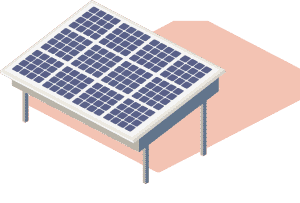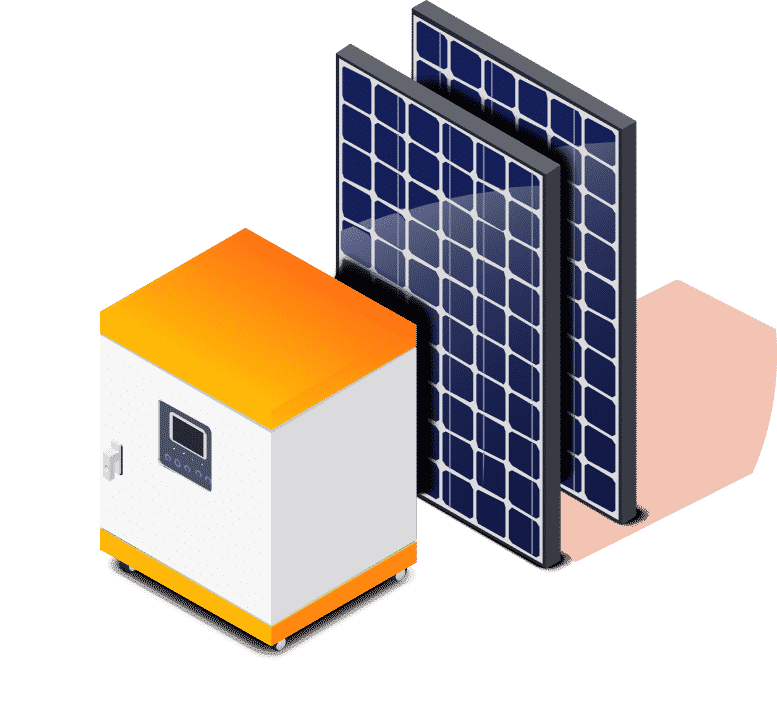Depreciation of Solar Panels

Depreciation of Solar Panels
In the beginning, it’s crucial to be aware that tax incentives may be different from those provided by the state and federal governments. In addition to the deferral and state tax credits The most popular tax-free incentive available is the 26% solar credit. Solar energy consumers have the option of claiming a 100% depreciation bonus tax credit as part of the Tax Cut and Jobs Act of 2017. This will help reduce their losses as the solar equipment they own decreases over time. The following solar devices are qualified for this bonus
- Solar PV panels
- Inverters
- Equipment to support the balance-of-system
- Racking
- Circuit breakers
- Transformers to boost your performance
- Surge arrestors
- Batteries and other energy storage devices
This bonus is not just for solar equipment but also includes sales and taxes. This bonus also applies to installation costs and indirect costs (as as long as you prove them). There are various tax incentives available for solar panels across various states. Some states, like Texas, have more incentives than others.
Solar Panel Depreciation (or solar panel depreciation) is one tax code that encourages the development of new technologies and increases investments into renewable power sources. It also helps consumers lower their installation costs.
Depreciation simply means that an asset’s worth decreases over time. Depreciation can be used by your company to pay back the cost of assets that lose value over time.
Solar energy depreciation is not available to homeowners who are contemplating moving to solar. However, it is applicable to businesses because solar energy is regarded as a business expense.
How do you define Depreciation?
Depreciation by definition refers to the depreciation of value due to wear and tear or obsoletion. Depreciation can be accounted for by taxpayers when they file their annual taxes to reduce their tax burden. This could result in significant savings. There are many types of property, both tangible and intangible that are depreciable when they are used for longer than one year.
Here are a few examples of property that is depreciating
- Buildings
- Machinery
- Vehicles
- Furniture
- Equipment
- Patents
- Copyrights
- Software for computers
To qualify for tax deductions Taxpayers must make use of the property to generate income. They cannot deduct the property’s commercial use if they are using it for both personal and business motives. It’s no longer possible to depreciate the property once the owner has recouped its cost or removed from service.
The benefits of depreciation for business
Businesses are exempt from depreciation because it only applies to those who earn a profit through the property. Businesses can deduct depreciation to spread out the costs of purchasing assets over the course of time. This allows for a more precise measurement of revenues as well as profits. This is vital for accounting and reporting as well as decision-making.
Companies can benefit from depreciation to:
- Recover assets’ costs in their use
- Save tax
- Keep accurate records of revenue


How does depreciation of solar panels function?
There are a variety of methods for the calculation of solar devaluation. Five-year Modified Accelerated Cost Recovery System (MACRS) depreciation plan is the most well-known.
An example from the depreciation Process
Let’s suppose you own the solar panel that costs $100,000. It is the first thing to do take advantage of the tax credit. This is because the IRS lowers tax credits’ basis by half. This leaves you with (26% / 23 percent). The $100,000 price could be reduced by 13% to reduce it to $87,000. The bonus of 100% can be claimed within the first year following installing your solar panel. Experts suggest using the MACRS model to calculate how much your solar system will depreciate. Let’s say you’re in the US and that federal law offers the solar energy tax credit at 24% credit however, the state government offers only 5%. After subtracting the solar tax credit of 26, the cost fell to $87,000. This is the base cost. Add the rates of both the federal and state governments to figure out how much you can reduce your expenses.
- Federal tax credit: $87,000 + 24 percent = $20.880
- Credit for State taxes: $87,700 5,5 x 8,350
The tax incentive offered by the federal government can be claimed in full within of the initial year. The amount of the state credit you’re claiming depends on the time it takes to claim.

What is the depreciation percentage for 26 percent Solar Tax Credit?
The IRS states that the base for depreciation is one-half of the tax credits permitted. If you purchase solar in 2021 and you receive a tax-free credit of 26 percent then your depreciation basis would represent 87% of the total price of solar (100 percent - [26%*.5*.5).
Which are Federal or State Savings Rates?
Businesses can now depreciate 100 percent of their cost base for the first time in the Federal level because of The Tax Cut and Jobs Act. The five-year program will spread the state savings. The tax brackets you choose will be used to determine your federal and state savings. In the following example, we will use 24% federal tax and 8percent state tax.
How do you calculate the savings from solar depreciation?
To calculate the savings, we’ll use for calculating the cost savings we’ll use the MACRS method. Imagine that you bought an array of solar panels worth $500,000 in 2021. This will make you eligible to receive the 26% Federal Solar Incentive Credit. Since the depreciable basis is half of the tax credit amount, we’ll need to take 13% off the solar system costs (26%*.5), which leaves us with $435,000 of depreciable basis ($500,000*[100%-13%]).
We need to multiply $435,000 by 24 percent to calculate federal savings. That will result in $104,400 in the first year. We will multiply the $435,000 by 8.8 and this will give us $34,800. Your savings from the state is calculated over the 5-year MACRS calendar.
Solar depreciation is a way to save $139,200. This is nearly 28 percent (or 27.84 percent) from the overall expense of your system.
The Benefits of Going Solar for Business
Using using the MACRS Solar Tax Repayment Schedule can aid your business in obtaining a solar investment. This is significant because investing in solar offers numerous benefits for every business. These are just a few of the numerous reasons to consider installing solar panels.
Federal Tax Credit
Companies can avail a variety of incentives with the federal tax credit. It reduces tax burdens significantly. Based on an amount that allows you to reduce your tax obligation dollar for dollar. The percentages can vary based the date that you first set up the software. You could also be eligible for tax credits that are not provided by your state.
Depreciation
Depreciation for solar panel investment makes it less expensive and reduces your tax burden as previously mentioned. Accelerated depreciation helps you manage your first year’s costs.
Solar Renewable Energy Certificate (SREC).
Another significant economic benefit is Solar Renewable Energy Certificates. Certain states require utilities to produce a certain percentage of their power by using sustainable sources (RECs). Many of these states have a requirement that a certain amount of certificates are generated using solar energy sources exclusively.
This can make solar power even more appealing, as you will own an SREC per megawatt-hour of solar energy generated. To fulfill their quotas, utility companies will buy your certificates. You could make hundreds of dollars in some cases.
Energy Independence
Solar panels can also provide energy independence, which could reduce your costs in the long-term. Natural fossil and gas prices can fluctuate from month to month, which can make financial planning difficult for businesses. Solar panels can be used to create your own power that reduces the need for utility companies and their fluctuating costs.
Why is solar investing more effective than other equipment?
Solar investments can bring many benefits to businesses that include lowering electricity bills and saving the environment. You also get a lot of cash back in the first year, thanks to the 100 percent bonus depreciation plan. Companies will probably choose the asset that offers the highest return. However, only solar will provide the highest return in the first year. This will be used to cover solar installation costs, or be put back into other projects.
Are You Thinking of Going Solar? Get in touch with Texas Solar Group for more details.
Many businesses can now go solar with government-sponsored programs. While solar is an expensive investment, it offers unparalleled returns and benefits. The cost of the initial solar installation are much lower because of tax credits as well as an accelerated amortization schedule. Texas Solar Group is a fantastic source for anyone who is considering making the switch to solar.
Texas Solar Group is an expert in the design and installation of solar energy systems. By designing a system that is custom-designed, we’ll maximize your return on investment. We are happy to answer any questions you have about solar energy and offer an estimate.
GET YOUR FREE PROPOSAL IN A FEW EASY STEPS
Fill out the form and our sales consultant will contact you! Once you’ve had your initial consultation, you’ll begin your solar journey.
